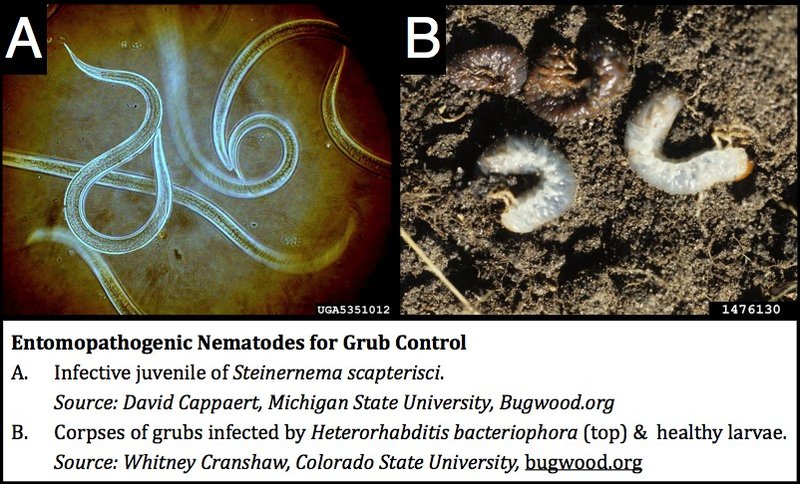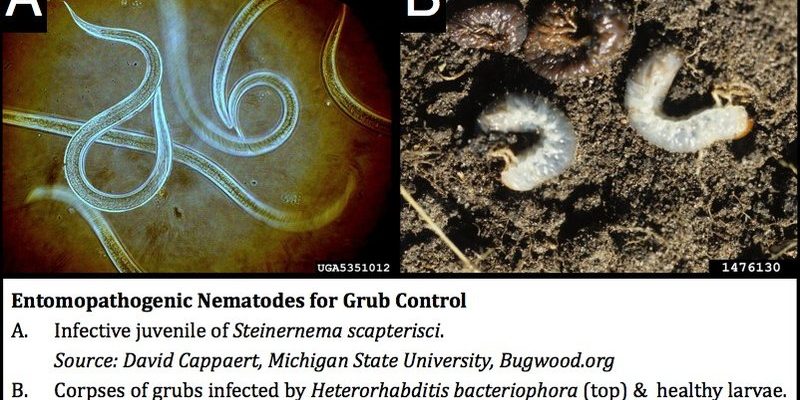
Nematodes are tiny, microscopic worms that act as nature’s pest control agents. They’re like the friendly neighborhood superheroes of the soil, coming to the rescue when you have grub problems. When introduced to your garden, **beneficial nematodes** hunt down and infect the grub worms, efficiently reducing their population without harming beneficial insects or plants. Let’s dive into how these little guys work and how you can harness their power to protect your garden.
What Are Nematodes?
Nematodes, often referred to as roundworms, are everywhere—soil, water, and even inside animals. In the context of gardening, we’re particularly interested in **entomopathogenic nematodes**, which specifically target pests like grub worms. They’re so small that you wouldn’t notice them unless you’re looking really closely, but don’t let their size fool you. These organisms are incredibly effective pest controllers.
When you introduce nematodes into your garden, they enter the soil and start their hunt for grubs. Once they find their prey, they penetrate the grub’s body and release bacteria that kill the host. This process can take a few days, after which the nematodes reproduce and continue to search for more grubs. Quite an efficient little operation, right?
Why Choose Nematodes Over Chemicals?
You might be wondering why you should opt for nematodes instead of traditional pesticides. Here’s the thing: chemical pesticides can be harmful not just to pests but also to beneficial insects, pets, and even you! Plus, they can linger in the soil, causing long-term damage to the ecosystem.
In contrast, nematodes are **eco-friendly** and specifically target pests. Using them means you’re not only protecting your garden but also promoting a healthy soil environment. This approach can lead to a more balanced ecosystem in your garden and even improve your plants’ health. Think of it as nurturing your garden’s natural resilience instead of relying on harsh chemicals.
How to Apply Nematodes
Applying nematodes is straightforward, but timing and technique are essential. Here’s a step-by-step guide to help you get started:
- Choose the Right Time: Nematodes work best when the soil temperature is between 50°F and 85°F (10°C to 29°C). This typically means applying them in the spring or early fall when grubs are most active.
- Prepare Your Soil: Before applying, ensure the soil is moist. If it’s too dry, the nematodes might not survive. Water your garden thoroughly a day before application.
- Mix with Water: Follow the instructions on the nematode packaging to mix them with water. This usually involves adding the nematodes to a bucket of water and stirring gently.
- Apply Evenly: Using a sprayer, distribute the nematode solution evenly across the affected areas of your garden. Make sure to cover all areas where you suspect grubs.
- Water Again: After application, water your garden lightly. This helps the nematodes move through the soil and reach their targets more effectively.
By following these steps, you’re setting your garden up for success with nematodes!
How Well Do Nematodes Work?
Nematodes can dramatically reduce grub populations if applied correctly. While results can vary based on factors like soil temperature and moisture, many gardeners report seeing a significant decline in grub activity within weeks. Some even notice healthier grass and plants, thanks to the lack of competition for nutrients.
But remember, no control method is a silver bullet. It’s best to combine nematodes with other cultural practices, like maintaining a healthy lawn and garden. Regularly aerating your soil can help create favorable conditions for nematodes. After all, a robust garden is your best defense against pests!
What to Expect After Application
After spreading nematodes in your garden, watch for changes. Initially, you may not see immediate results, and that’s okay! The nematodes need time to find and attack the grubs. Within a few days to a week, you might start noticing fewer signs of grub activity, such as wilting grass or patches in your lawn.
Be patient. This process can take some time, but knowing you’ve chosen a natural, sustainable solution adds peace of mind. If, after a few weeks, you’re still seeing many grubs, consider reapplying nematodes or checking your garden for other issues.
Where to Buy Nematodes
You can find nematodes at garden centers, through online retailers, or even specialty sites focused on organic gardening. Look for brands that sell **entomopathogenic nematodes** specifically for grub control. Ensure the package includes instructions on how to apply them, and check that the nematodes are dormant when you receive them.
When selecting a product, consider your gardening goals and needs. Some nematodes are more effective against certain types of grubs than others, so do a little research to find the one that’s best for your situation. It’s like choosing the right tool for the job—having the right nematodes can make all the difference!
Final Thoughts on Nematodes
Nematodes are a fantastic biological control option for grub worms. They offer an environmentally friendly way to protect your garden while also supporting a balanced ecosystem. By understanding how to apply them and setting realistic expectations, you can successfully integrate these tiny allies into your gardening routine.
So next time you’re tempted to reach for chemical pesticides, give nematodes a try instead. You might be surprised by how effective these little worms can be. Your garden—and the planet—will thank you!

